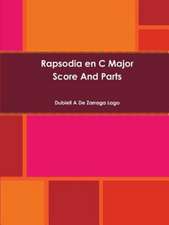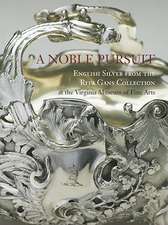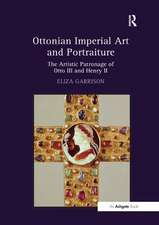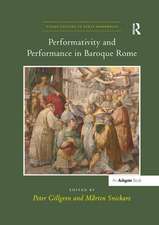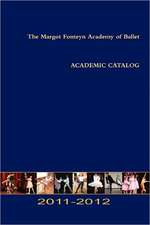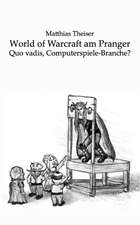Visual Acuity and the Arts of Communication in Early Modern Germany: Visual Culture in Early Modernity
Editat de Jeffrey Chipps Smithen Limba Engleză Paperback – 6 feb 2018
| Toate formatele și edițiile | Preț | Express |
|---|---|---|
| Paperback (1) | 312.43 lei 6-8 săpt. | |
| Taylor & Francis – 6 feb 2018 | 312.43 lei 6-8 săpt. | |
| Hardback (1) | 769.92 lei 6-8 săpt. | |
| Taylor & Francis – 11 dec 2014 | 769.92 lei 6-8 săpt. |
Din seria Visual Culture in Early Modernity
- 22%
 Preț: 324.16 lei
Preț: 324.16 lei - 18%
 Preț: 1061.84 lei
Preț: 1061.84 lei -
 Preț: 311.37 lei
Preț: 311.37 lei - 9%
 Preț: 1022.27 lei
Preț: 1022.27 lei -
 Preț: 312.12 lei
Preț: 312.12 lei -
 Preț: 356.70 lei
Preț: 356.70 lei -
 Preț: 336.27 lei
Preț: 336.27 lei -
 Preț: 432.98 lei
Preț: 432.98 lei - 17%
 Preț: 343.55 lei
Preț: 343.55 lei - 25%
 Preț: 324.16 lei
Preț: 324.16 lei - 30%
 Preț: 769.92 lei
Preț: 769.92 lei - 13%
 Preț: 338.33 lei
Preț: 338.33 lei - 22%
 Preț: 259.98 lei
Preț: 259.98 lei - 25%
 Preț: 326.11 lei
Preț: 326.11 lei -
 Preț: 471.08 lei
Preț: 471.08 lei - 28%
 Preț: 826.84 lei
Preț: 826.84 lei - 28%
 Preț: 819.90 lei
Preț: 819.90 lei - 28%
 Preț: 878.42 lei
Preț: 878.42 lei - 28%
 Preț: 829.69 lei
Preț: 829.69 lei - 25%
 Preț: 325.43 lei
Preț: 325.43 lei - 30%
 Preț: 853.03 lei
Preț: 853.03 lei - 17%
 Preț: 339.96 lei
Preț: 339.96 lei - 30%
 Preț: 830.92 lei
Preț: 830.92 lei - 16%
 Preț: 338.33 lei
Preț: 338.33 lei - 30%
 Preț: 826.02 lei
Preț: 826.02 lei - 30%
 Preț: 772.60 lei
Preț: 772.60 lei - 18%
 Preț: 1017.63 lei
Preț: 1017.63 lei - 30%
 Preț: 768.62 lei
Preț: 768.62 lei - 17%
 Preț: 338.33 lei
Preț: 338.33 lei - 30%
 Preț: 771.07 lei
Preț: 771.07 lei - 26%
 Preț: 324.84 lei
Preț: 324.84 lei - 30%
 Preț: 772.76 lei
Preț: 772.76 lei - 16%
 Preț: 347.33 lei
Preț: 347.33 lei - 31%
 Preț: 765.03 lei
Preț: 765.03 lei -
 Preț: 489.26 lei
Preț: 489.26 lei - 28%
 Preț: 822.91 lei
Preț: 822.91 lei - 18%
 Preț: 300.09 lei
Preț: 300.09 lei - 26%
 Preț: 820.73 lei
Preț: 820.73 lei - 28%
 Preț: 829.69 lei
Preț: 829.69 lei - 28%
 Preț: 826.84 lei
Preț: 826.84 lei - 30%
 Preț: 776.03 lei
Preț: 776.03 lei
Preț: 312.43 lei
Preț vechi: 379.25 lei
-18% Nou
Puncte Express: 469
Preț estimativ în valută:
59.79€ • 62.19$ • 49.36£
59.79€ • 62.19$ • 49.36£
Carte tipărită la comandă
Livrare economică 14-28 aprilie
Preluare comenzi: 021 569.72.76
Specificații
ISBN-13: 9781138547605
ISBN-10: 1138547603
Pagini: 244
Dimensiuni: 174 x 246 x 20 mm
Greutate: 0.45 kg
Ediția:1
Editura: Taylor & Francis
Colecția Routledge
Seria Visual Culture in Early Modernity
Locul publicării:Oxford, United Kingdom
ISBN-10: 1138547603
Pagini: 244
Dimensiuni: 174 x 246 x 20 mm
Greutate: 0.45 kg
Ediția:1
Editura: Taylor & Francis
Colecția Routledge
Seria Visual Culture in Early Modernity
Locul publicării:Oxford, United Kingdom
Cuprins
Contents: Introduction, Jeffrey Chipps Smith; Intent and independence: late Fifteenth-century object engravings, Allison Stielau; Seeing Christ: visual piety in Saxony’s Erzgebirge, Bridget Heal; Johann Neudorffer’s Nachrichten (1547): calligraphy and historiography in early modern Nuremberg, Susanne Meurer; Apprehending the macrocosm: The Universe Cup of Jonas Silber and its sources, Andrew Morrall; Lucas Cranach the Younger’s funeral sermon as a Lutheran treatise on art, Ruth Slenczka; A musical dialogue in bronze: Gregor Aichinger’s Lacrumae (1604) and Hans Reichle’s crucifixion group for the Basilica of SS. Ulrich and Afra in Augsburg, Alexander J. Fisher; The acute gaze of Argos: Enargeia as sinful vision and psychagogic technique in Bidermann’s Cenodoxus, Anthony Mahler; ‘This charming invention created by the king’: Christian IV and his concealed music, Arne Spohr; Dynastic botany: banyans, cedars, and palms as visual models in Seventeenth-century genealogy, Volker Bauer; Royal and Roman in the rebuilding of Berlin c. 1700, Kristoffer Neville; Index.
Notă biografică
Jeffrey Chipps Smith is Kay Fortson Chair in European Art at the University of Texas at Austin, USA.
Recenzii
"Visual Acuity and the Arts of Communication in Early Modern Germany, edited by Jeffrey Chipps Smith, puts productive pressure on its period’s blind spots. Its essays consider German visual culture from the late fifteenth to early eighteenth centuries by means of healthy reliance on present-day creativity and hermeneutic skill. ... Focused on the power of visualization, the authors use early modern objects and texts largely as a prompt for investigating aspects of visual culture that early modern people seem not to have written much about. ...[T]he notion of 'visual acuity' here affirms a keenness of perception and interpretation on the parts of both maker and scholar, as it builds on the material, object, and social focuses of previous decades of art history." - CAA Reviews
"Established scholars and graduate students come together in this volume to explore relationships between art and understanding during the early modern period. This truly interdisciplinary volume connects historians, art historians, music historians, and literary scholars whose essays range from calligraphy to performance to architecture." - Renaissance Quarterly
"[The] selected essays, which are contextualized and harmonized in [Chipps Smith's] wonderful introduction, demonstrate the elegant simplicity of acute seeing. ...The issues laid bare in this volume - visual literacy, copies and emulation, memory and devotion, and the arts of communication and reception - are indeed all topics of acute interest to scholars of early modern as well as medieval Germany." - Sehepunkte
"Visual Acuity and the Arts of Communication in Early Modern Germany would be a worthy addition to the library of any scholar of the arts and communication, visual or otherwise, in sixteenth-century Germany." - Sixteenth Century Journal
"The theme appealed to Smith as an art historian, and many essays in the volume are by FNI participants in that field. Other essays demonstrate that historians and scholars of music or literature also have much to gain - and to add - by engaging with visual images and considering the act of seeing." - Historians of Netherlandish Art
"The broad scope of topics make this volume dynamic and interesting. By taking an individual case-study approach rather than forcing an attempt at a larger synthesis, editor Jeffrey Chipps Smith and the contributors have created a volume that highlights the multiplicity of ways in which visual presentation and reception were utilized in early modern Germany." - Journal of Jesuit Studies
"Established scholars and graduate students come together in this volume to explore relationships between art and understanding during the early modern period. This truly interdisciplinary volume connects historians, art historians, music historians, and literary scholars whose essays range from calligraphy to performance to architecture." - Renaissance Quarterly
"[The] selected essays, which are contextualized and harmonized in [Chipps Smith's] wonderful introduction, demonstrate the elegant simplicity of acute seeing. ...The issues laid bare in this volume - visual literacy, copies and emulation, memory and devotion, and the arts of communication and reception - are indeed all topics of acute interest to scholars of early modern as well as medieval Germany." - Sehepunkte
"Visual Acuity and the Arts of Communication in Early Modern Germany would be a worthy addition to the library of any scholar of the arts and communication, visual or otherwise, in sixteenth-century Germany." - Sixteenth Century Journal
"The theme appealed to Smith as an art historian, and many essays in the volume are by FNI participants in that field. Other essays demonstrate that historians and scholars of music or literature also have much to gain - and to add - by engaging with visual images and considering the act of seeing." - Historians of Netherlandish Art
"The broad scope of topics make this volume dynamic and interesting. By taking an individual case-study approach rather than forcing an attempt at a larger synthesis, editor Jeffrey Chipps Smith and the contributors have created a volume that highlights the multiplicity of ways in which visual presentation and reception were utilized in early modern Germany." - Journal of Jesuit Studies
Descriere
During the early modern period, visual imagery was put to ever new uses as many disciplines adopted visual criteria for testing truth claims, representing knowledge, or conveying information. Religious propagandists, political writers, satirists, cartographers, the scientific community, and others experimented with uses of visual images. Artists, writers, preachers and musicians, among others, often employed visual images to connect with their audiences. Contributors to this interdisciplinary collection explore how the exponential growth in images, especially prints, impacted the intellectual horizons and the visual awareness of viewers in early modern Germany.


